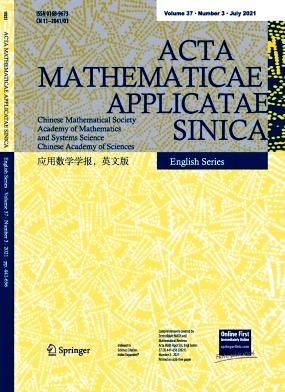无短环平面图的Δ+2染色
IF 0.9
4区 数学
Q3 MATHEMATICS, APPLIED
Acta Mathematicae Applicatae Sinica, English Series
Pub Date : 2023-11-08
DOI:10.1007/s10255-023-1098-8
引用次数: 0
摘要
图G的着色是内射着色,如果它对任何顶点邻域的限制是内射的,这意味着任何两个顶点如果有一个公共邻域,就会得到不同的颜色。G的内射色数χi(G)是最小整数k,使得G具有内射k着色。本文证明了(1)如果G是周长G≥6,最大度Δ≥7的平面图,则χi(G)≤Δ+2;(2) 如果G是Δ≥24且不含3,4,7-环的平面图,则χi(G)≤Δ+2。本文章由计算机程序翻译,如有差异,请以英文原文为准。
Injective Δ+2 Coloring of Planar Graph Without Short Cycles
A coloring of graph G is an injective coloring if its restriction to the neighborhood of any vertex is injective, which means that any two vertices get different colors if they have a common neighbor. The injective chromatic number χi(G) of G is the least integer k such that G has an injective k-coloring. In this paper, we prove that (1) if G is a planar graph with girth g ≥ 6 and maximum degree Δ ≥ 7, then χi(G) ≤ Δ + 2; (2) if G is a planar graph with Δ ≥ 24 and without 3,4,7-cycles, then χi(G) ≤ Δ + 2.
求助全文
通过发布文献求助,成功后即可免费获取论文全文。
去求助
来源期刊
CiteScore
1.30
自引率
0.00%
发文量
70
审稿时长
3.0 months
期刊介绍:
Acta Mathematicae Applicatae Sinica (English Series) is a quarterly journal established by the Chinese Mathematical Society. The journal publishes high quality research papers from all branches of applied mathematics, and particularly welcomes those from partial differential equations, computational mathematics, applied probability, mathematical finance, statistics, dynamical systems, optimization and management science.

 求助内容:
求助内容: 应助结果提醒方式:
应助结果提醒方式:


